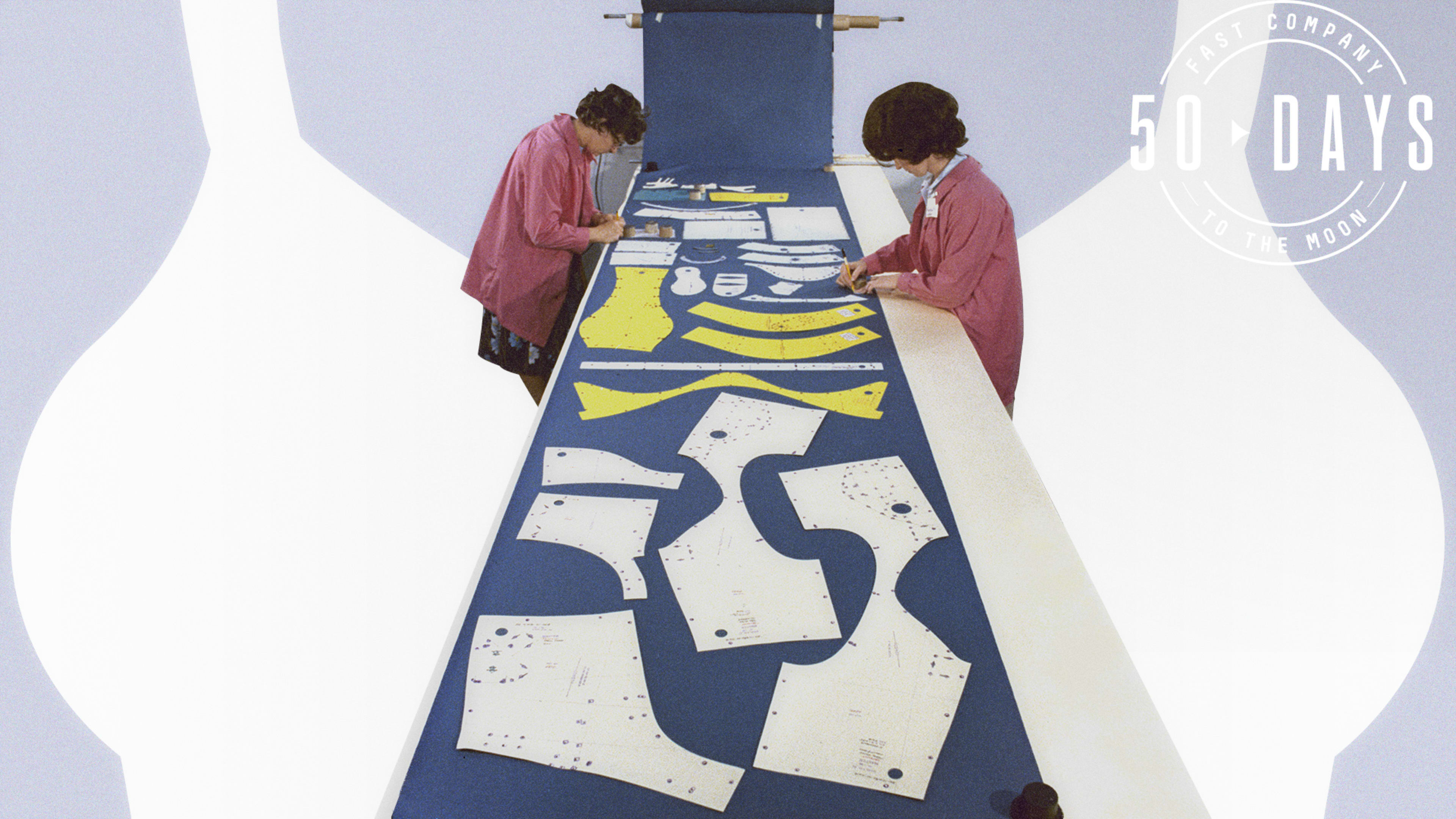This is the 45th in an exclusive series of 50 articles, one published each day until July 20, exploring the 50th anniversary of the first-ever Moon landing. You can check out 50 Days to the Moon here every day.
One of the underrated technical challenges of going to the Moon was designing the spacesuits. The suits had to be inflated and pressurized from the inside—meaning, they had to carry around a tiny version of the atmosphere human beings require to stay alive. The suits were, in essence, sophisticated balloons.
They also had to be tough, able to withstand a temperature range of perhaps 500º, from –280º in shadow to +240º in sun, as well as survive being hit by a micrometeorite going 36,000 mph while astronauts were wearing them.
The most daunting challenge? The suits also had to be flexible.
Astronauts had to be able to move with almost the same freedom, flexibility, and nimbleness that they would on Earth. They had to be able to climb, bend over, twist and look around, and most difficult of all, move their arms and hands so they could get anything done on the surface of the Moon or while spacewalking. The gloves, said one official, should allow an astronaut to pick up a dime.
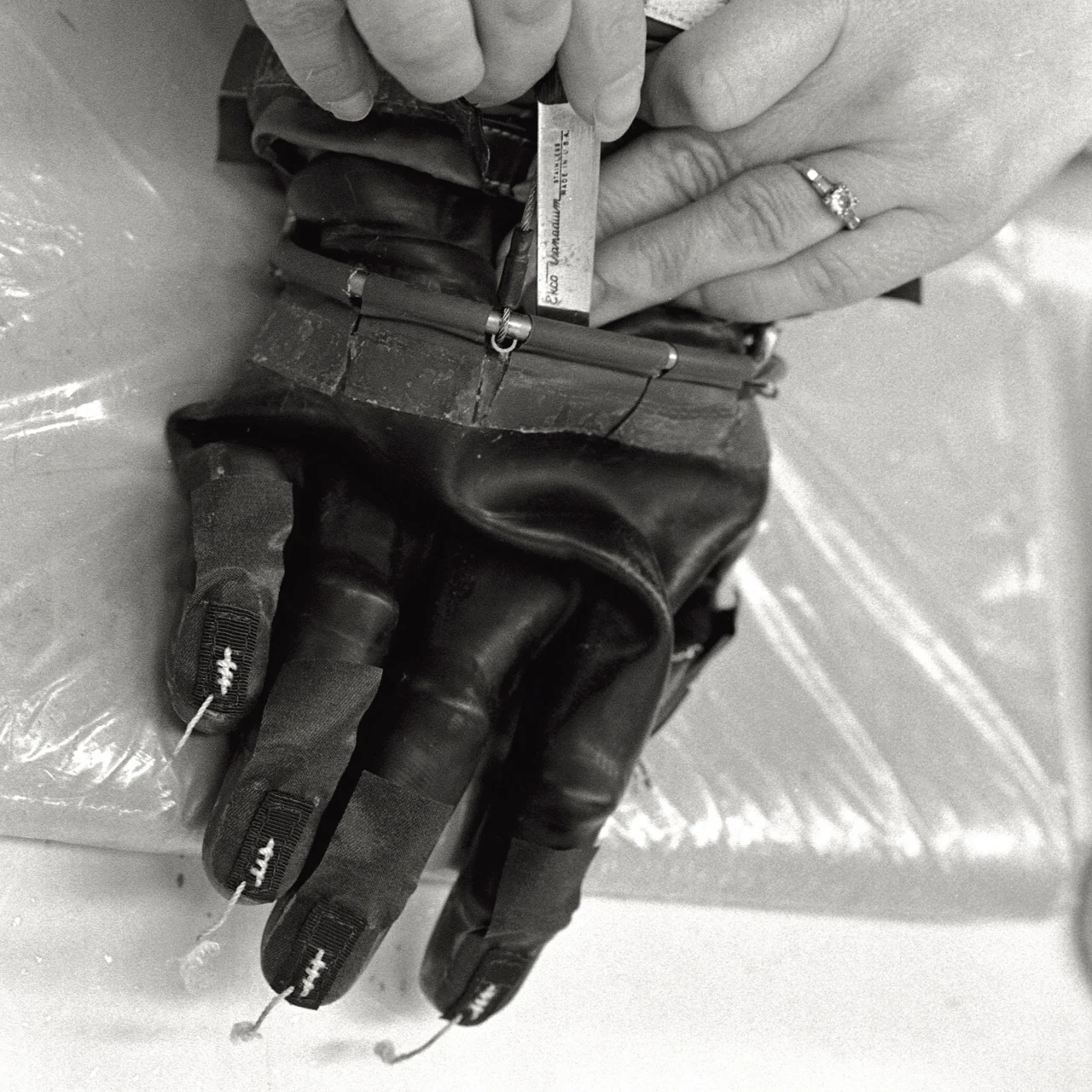
The company that managed to figure out how to solve the problem was Playtex, the famous maker of bras and girdles of the 1950s and 1960s whose Cross Your Heart bra, introduced in 1965, was an icon of the era. Playtex—part of a company with the corporate name International Latex Company (ILC)—was an unlikely choice. Big defense contractors wanted to make the spacesuit, including Hamilton Standard (which made the life-support backpacks the Apollo astronauts wore during their Moonwalks), B.F. Goodrich (which made the Mark IV spacesuits worn by Mercury astronauts), and Litton Industries (whose Mark I suit predated Sputnik and the space race).
How NASA, a vast male-dominated, engineering-driven organization, picked a maker of female undergarments to make one of its most visible and most critical pieces of spaceflight equipment is a story worthy of a Hollywood movie, and in the hands of Nicholas de Monchaux, who wrote the definitive history of the Apollo spacesuit development in his quirky tome Spacesuit: Fashioning Apollo, it is. (In fact, in 2013, Warner Bros. optioned the book for a movie, but it has not yet been made.)
At one point, Playtex won the contract to make the suits, was made a subcontractor to Hamilton Standard but then, in a dramatic turn in 1965, was fired by Hamilton Standard, which wanted the suit contract for itself.
After Playtex’s firing, NASA staged a competition to see who could make the best suit. Playtex wasn’t invited to participate in the face-off, and company officials immediately flew to Houston and, essentially, begged to be allowed to submit a suit into the competition, at their own expense, to be tested alongside the others.
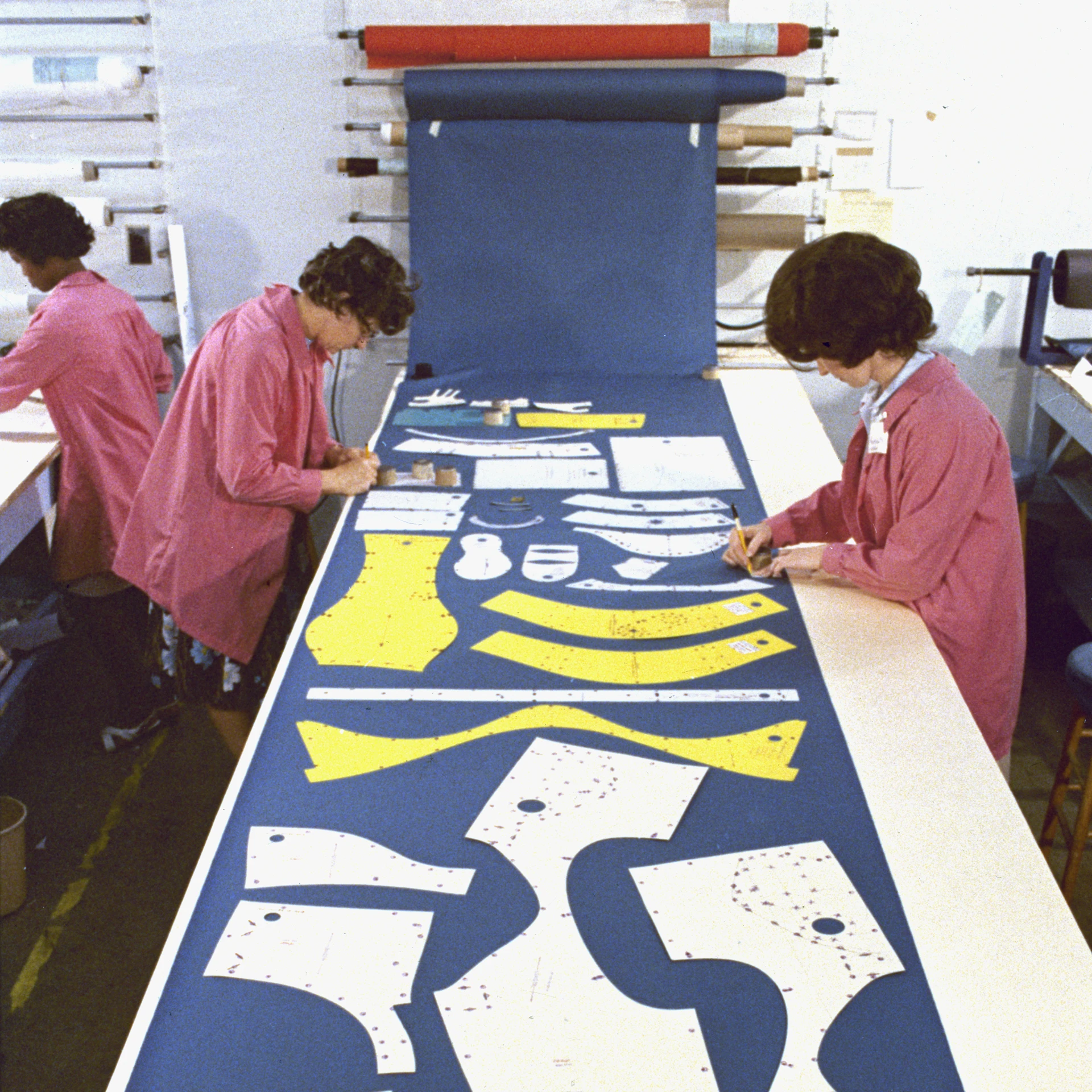
After its furious, abbreviated development and production, the Playtex suit went head-to-head with its rivals in a demanding series of side-by-side tests. During one, the helmet of one of the competing suits blew off, with the test subject wearing it. The other competitor’s suit had shoulders so wide, once inflated for the “surface” tests, the astronaut couldn’t climb back in through the hatch on the mockup lunar module. Indeed, internal NASA documents reveal that the other two suits had such limited mobility that the test astronauts couldn’t reach up and do routine tasks.
The Playtex suit was judged far and away the best.
Later, to bolster its case, Playtex produced a completely different kind of tryout: It sent Tom Sylvester, one of its suit-testing technicians, out to the football field at Dover High School near the Delaware factory. He was dressed in an early version of Playtex’s Apollo suit, with attached air hoses, and accompanied by Playtex staff. He played football for several hours in the suit, while being filmed, with a colleague who was dressed in ordinary street clothes.
“I ran. I kicked and punted and passed,” says Sylvester, in a documentary about the Moon missions called Moon Machines. Sylvester also dropped to the ground in the suit and did pushups. He swooped over and touched his toes without bending his knees—or having his helmet pop off.
https://youtu.be/FBK7FYg6rXY?t=1875
It was an astonishing, and also joyful, demonstration of the fact that the Playtex suit, although pressurized, allowed the test astronaut to move around with almost the same mobility and ease as if he were wearing a football uniform.
The sewing of the astronauts’ suits turned out to be daunting and demanding. Playtex, which renamed its industrial division ILC Dover during the spacesuit work (after its Delaware headquarters), brought skilled seamstresses over from its consumer products factories. “I was sewing [latex] baby pants,” said Eleanor Foraker, who would go on to be a spacesuit assembly supervisor, “and an engineer came to me and asked me if I would mind trying something else.”
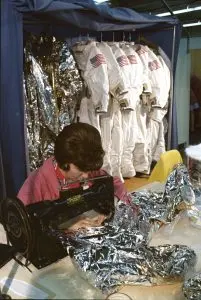
Seams in the spacesuits had to be sewn to the precision of the width of a single straight pin. Every stitch of every inch of spacesuit seam in every layer was counted to ensure quality and safety.
The suits were one more example on Apollo—just like its handwoven navigation computer—of cutting-edge technology that could only be manufactured and assembled by hand.
The Playtex / ILC suits worked perfectly, and they became powerful cultural symbols. Neil Armstrong, the first astronaut to step onto the Moon wearing one, wrote a letter of appreciation to the people who made the suits in 1994, on the 25th anniversary of the first Moon landing. “It’s true beauty,” he wrote, “was that it worked. It was tough, reliable, almost cuddly.”
And NASA clearly never regretted the unconventional choice, though today, the International Space Station suits come in more adaptable sizes rather than being tailored specifically to each astronaut as they were in the Apollo days. But that same division of Playtex, now the independent company ILC Dover, still makes every NASA spacesuit, from its headquarters at 1 Moonwalker Road.
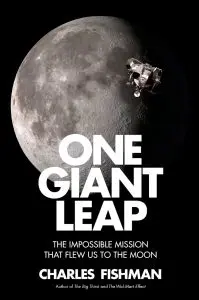
Charles Fishman, who has written for Fast Company since its inception, has spent the past four years researching and writing One Giant Leap, his New York Times best-selling book about how it took 400,000 people, 20,000 companies, and one federal government to get 27 people to the Moon. (You can order it here.)
For each of the next 50 days, we’ll be posting a new story from Fishman—one you’ve likely never heard before—about the first effort to get to the Moon that illuminates both the historical effort and the current ones. New posts will appear here daily as well as be distributed via Fast Company’s social media. (Follow along at #50DaysToTheMoon).
Recognize your brand’s excellence by applying to this year’s Brands That Matter Awards before the early-rate deadline, May 3.
